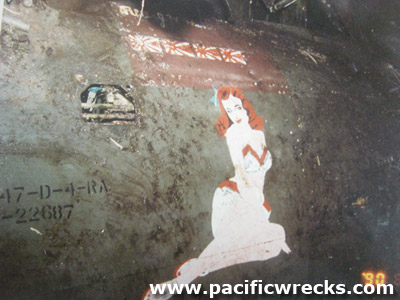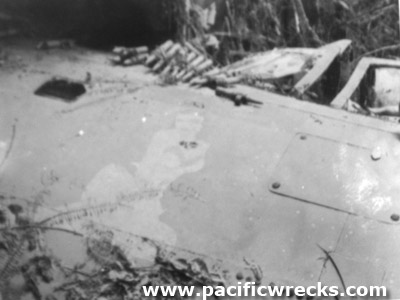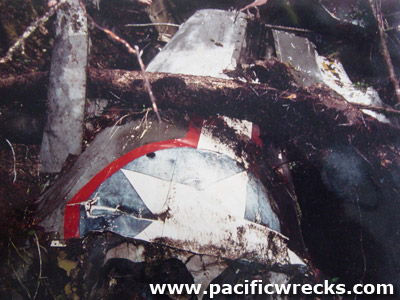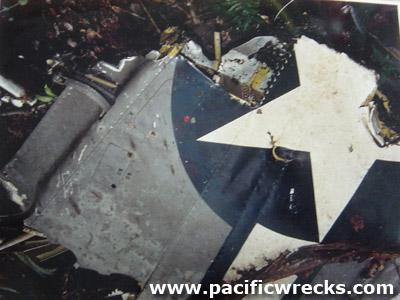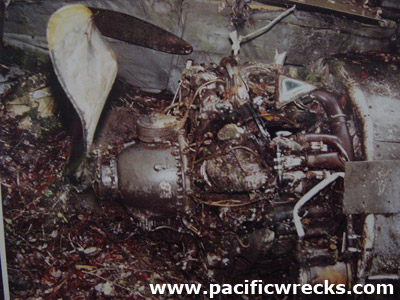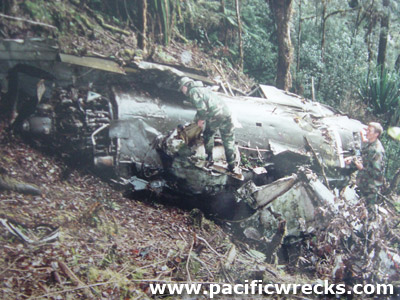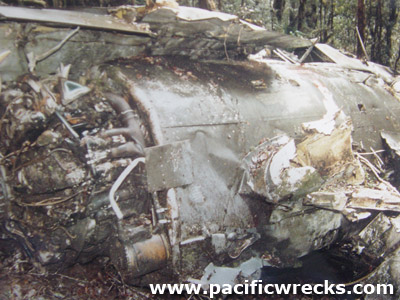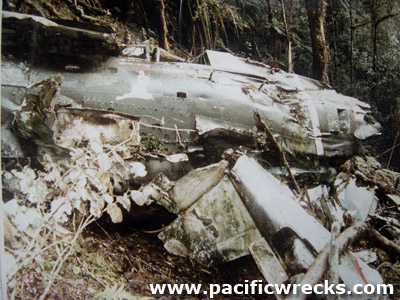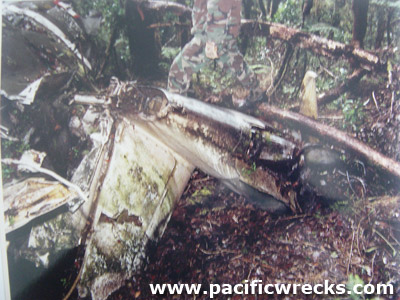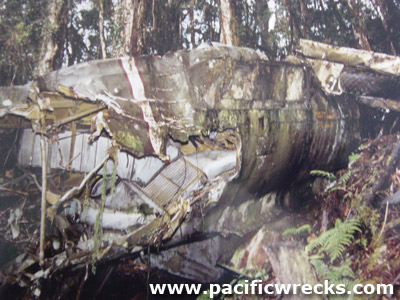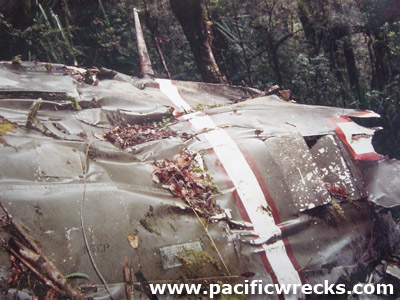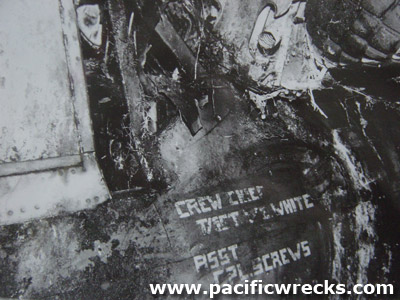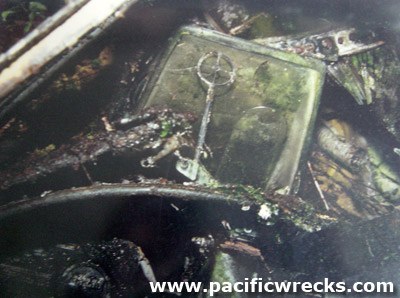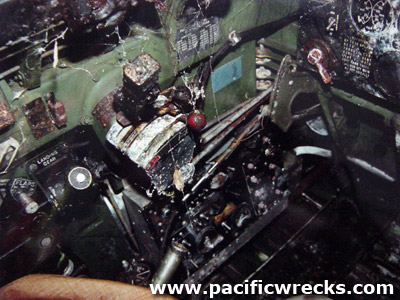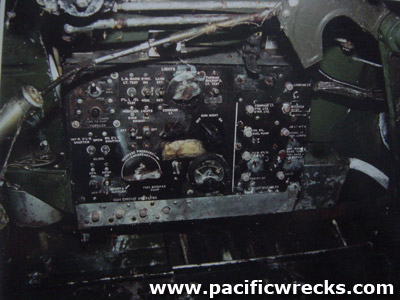Background
Marion
C. Lutes was an A-20 pilot with the 312th based at Gusap.
It would seem that on the 29 th April 1944 he happened to
be at Nadzab
when the P-47D
42-22687 needed
to be ferried back to it's base at Gusap following maintenance
at Nadzab. He was able to persuade the powers that were responsible
for the aircraft to allow him to ferry it back to Gusap even
though Lutes was a bomber pilot. His flight plan indicated
that he was heading off to Faita to test fire the guns. Following
his departure from Nadzab on that day he was not seen again.
Discovery in 1979
That
is until October 1979. At that time, the British Army were
sponsering an "Outward Bound" type of
operation which awarded a scholarship to selected British Youths
(both men
and Women)
in
groups of about
thirty to be removed to various remote parts of the globe to study
the people, geography and carry out limited "good works" such
as cleaning up bush schools, hospitals etc. This sometimes involved
daunting hikes over the ranges and through the forest. It was on
one of these hikes from Gusap over the Finisterre Ranges to the northern
coast (or vice versa) that a group of Operation
Drake men
and women under command of a British Army officer discovered Lute's
P-47 at 8,000' ASL about 8 miles north of Gusap. I was fairly close
to Drake's Commanding Officer, a Lt. Colonel John Blashford Snell
and he provided me with the details of the "find" and
requested that I research the site if I was able to. I had the
plane identified through one of Australia's leading war historians
in matters to do with the RAAF in the SWPA, Robert K. Piper.
Piper has been writing articles and conducting actual
visits to crash sites since he lived in PNG during the 1960s.
As soon as this information was to hand, I advised CILHI (whom I had worked with
previously on other sites that I had personally
located
for them), Colonel Blashford Snell and Bruce
Hoy.
Six Visits to the Wreck Site
1)
I first visited the site on January 3, 1990 with my son Nicholas.
This was to positively identify the aircraft and
photograph
it. We
overnighted
there. It did take nearly all day to locate it. The guides we organized
managed to get lost.
2) I went in again on 17th August 1990 to
guide US Army CILHI and Bruce Hoy there so that CILHI could carry out a brief
survey.
3) I once again
took CILHI to the site on the 21st September 1990. The CILHI man
was Capt
Dane Anderson.
This was
for another survey.
We did not over night.
4) On the 15th September 2000 I took Fred
Hagen to the site and to O'Sullivan's
P-38 as well.
5) Visit with CILHI teams in 1990,
but do not have the exact dates.
6) Visit with CILHI teams in 2000,
but do not have the exact dates.
I was advised by CILHI a couple of years ago that they still fully
intended to recover Lutes and that they did not want the site
to be interfered with. Accordingly, when it was brought to my attention
earlier this year that Greinert intended to remove the aircraft
in the near future, I immediately advised JPAC by e-mail. This
was last
May.
JPAC were in town at this time and a few days ago I advised them
that Greinert was currently removing the aircraft. They became
most concerned
and immediately started to attempt to do something to
stop him, it was however too late. They did not seem to have
any knowledge
of the recovery or that I had advised them of Greinert's
plan previously.
I took some video and quite
a few photographs on each visit and a lot of it is quite good.
I even have a set of photographs that Operation Drake had made
for me. They are fairly terrible. This means that I have visited
the site six times since it was discovered in 1979.
PART II - Leahy's Feelings About the Recovery
